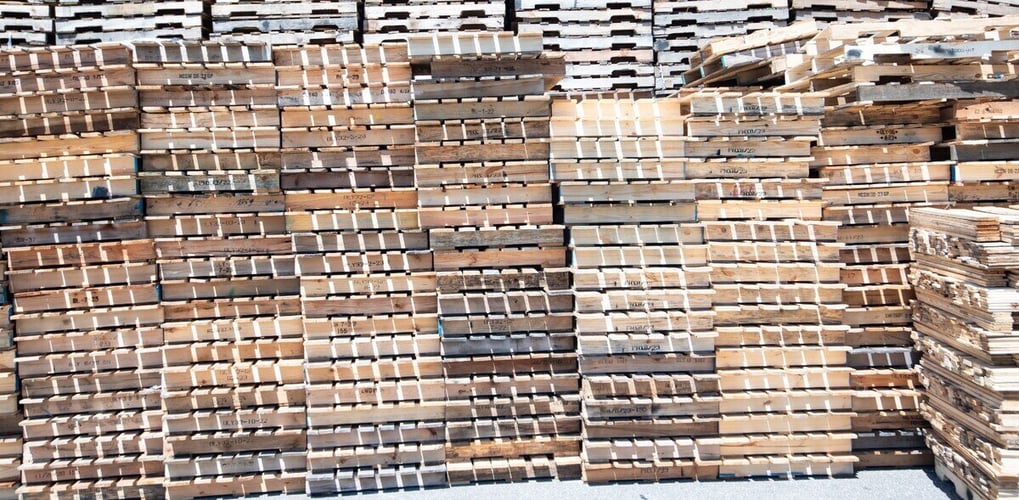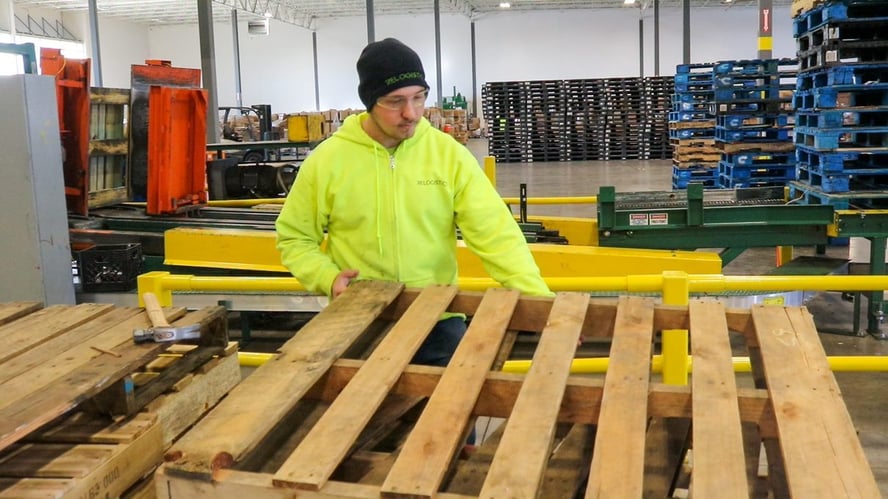Why Repairing Pallets Could Save You More Than You Think
If you're running a warehouse or logistics business, chances are you've dealt with pallets that are damaged or worn out. Rather than throwing them away, imagine saving money and reducing waste by simply repairing them. It might sound too good to be true, but with the right tools and techniques, you can repair pallets yourself, and they can serve you for many more years. In this post, we’ll show you how easy it is to breathe new life into your old pallets and why it’s worth doing.

Why You Should Repair Pallets
You may not think of repairing pallets when they break, but it’s actually a smart and sustainable choice for your business. Let’s explore why repairing your pallets is a great idea.
- Save Money: Replacing pallets can be costly, especially if you need them in bulk. Repairing a pallet is often much cheaper, making it a more cost-effective choice.
- Eco-Friendly: Repairing damaged pallets reduces waste. It also supports a more sustainable approach for your business instead of sending pallets to a landfill.
- Keep Things Running Smoothly: Pallets are key to your operation. Repairing them reduces delays and keeps your supply steady, helping you move goods without interruption.
When you see how much value repairing pallets brings, it’s clear that this simple fix can be very rewarding.
Common Types of Pallet Damage
Before jumping into repairs, it’s essential to understand the types of damages that are common with pallets. This will help you assess whether a pallet can be repaired or needs replacing.
- Cracked or Broken Slats: Slats are the horizontal wooden pieces on a pallet. Over time, they can crack or break because of heavy weight or rough handling.
- Loose or Missing Nails: As pallets get moved around, nails can come loose or even fall out, weakening the pallet’s structure.
- Bent or Broken Deck Boards: Heavy use or mishandling can lead to bent boards that compromise the pallet’s strength.
- Damaged Corner Blocks or Stringers: The corner blocks and stringers provide structural support. If they break, the pallet may become unstable.
Once you know the common issues, you’ll be able to decide if repairing your pallets is worth the effort.
Can You Repair Pallets?
The short answer is yes, in most cases, pallets can be repaired. However, the extent of the damage will determine whether it’s worth fixing. If the pallet is structurally compromised or has a lot of damage, it may not be safe to repair. But for minor issues like cracked slats or loose nails, repairing is a quick and simple solution.
- Minor Damage: Small cracks, loose nails, or a broken deck board can be easily fixed at home or in your warehouse with basic tools.
- Severe Damage: If the pallet is badly broken or unsafe after repairs, replacing it is the better choice.
Carefully inspecting the pallet before deciding on repairs is key to ensuring safety and stability in your operations.
How to Repair Pallets

Repairing pallets is easier than you might think, and most of the time, you don’t need any specialized skills or expensive tools. Below are step-by-step instructions on how to repair common types of pallet damage.
Fixing Cracked or Broken Slats
Slats can crack or break from overuse. Here's how you can fix them:
- Remove the damaged slat: Use a hammer or pry bar to carefully take out the broken slat.
- Cut a new slat: Measure the length of the slat and cut a replacement from a piece of wood that matches the original.
- Attach the new slat: Secure the new slat with nails or screws, making sure it’s aligned with the other slats.
Reattaching Loose Nails
Loose nails are common, and reattaching them is simple:
- Find the loose nails: Identify where nails or screws have come loose.
- Hammer them back in: Use a hammer to reattach the nails or use a screw gun for better stability.
- Check for stability: After securing the nails, make sure the pallet is stable and firm.
Repairing Bent or Broken Deck Boards
Deck boards are the large flat pieces of wood that make up the main surface of the pallet. If one of them is bent or broken, here’s how to replace it:
- Remove the damaged board: Take out the broken deck board carefully.
- Cut a replacement board: Measure and cut a new board that fits the space.
- Secure the board: Attach the new board with nails or screws, ensuring it’s level with the other boards.
Fixing Corner Blocks or Stringers
If the corner blocks or stringers (the structural beams) are damaged, you can follow these steps:
- Remove the damaged parts: Use a pry bar to take out the broken corner block or stringer.
- Replace or reinforce: If the block is broken, replace it with a new one. If it’s loose, reattach it with screws or nails.
- Recheck the pallet’s stability: After replacing or reinforcing the structural parts, ensure the pallet is secure.
When to Replace Pallets Instead of Repairing

Not all pallets are worth repairing. In some cases, it may be safer and more cost-effective to replace them entirely. Here are a few reasons why:
- Severe structural damage: If the pallet is so damaged that it can’t be safely repaired, it’s time to replace it.
- Too many repairs: If the pallet has been repaired multiple times, it may be beyond saving.
- Cost of repair: Sometimes the cost of repairing a pallet can outweigh the cost of buying a new one.
Make sure to assess the overall condition of the pallet before deciding whether to repair or replace it.
Tools and Materials Needed for Pallet Repairs
You don’t need an advanced toolkit to repair pallets. Here’s what you’ll need:
- Hammer or screw gun: To remove nails and secure new boards.
- Nails or screws: To fix slats, boards, or corner blocks.
- Saw: To cut new slats or boards.
- Replacement wood: For broken or missing slats.
- Wood glue (optional): To add extra support if needed.
Having these basic tools on hand will make the repair process easy and efficient.
Best Practices for Maintaining Repaired Pallets

Once you’ve repaired your pallets, taking care of them properly will help them last longer. Here’s how to maintain your repaired pallets:
- Store them properly: Keep repaired pallets in dry, cool places to prevent further damage from moisture or weather.
- Inspect Regularly: Check your pallets often for wear and tear. Fix any small damage before it gets worse.
- Reinforce as needed: If you notice parts of the pallet starting to weaken, reinforce them with extra nails or screws.
By maintaining your repaired pallets, you can get many more years of use from them.
If you need help with pallet management, repairs, or logistics services, Relogistics is here to assist you. With our expertise in pallet management and supply chain solutions, we can help streamline your operations.
Need support? Contact us today through Relogistics Contact or explore our pallet management services.
